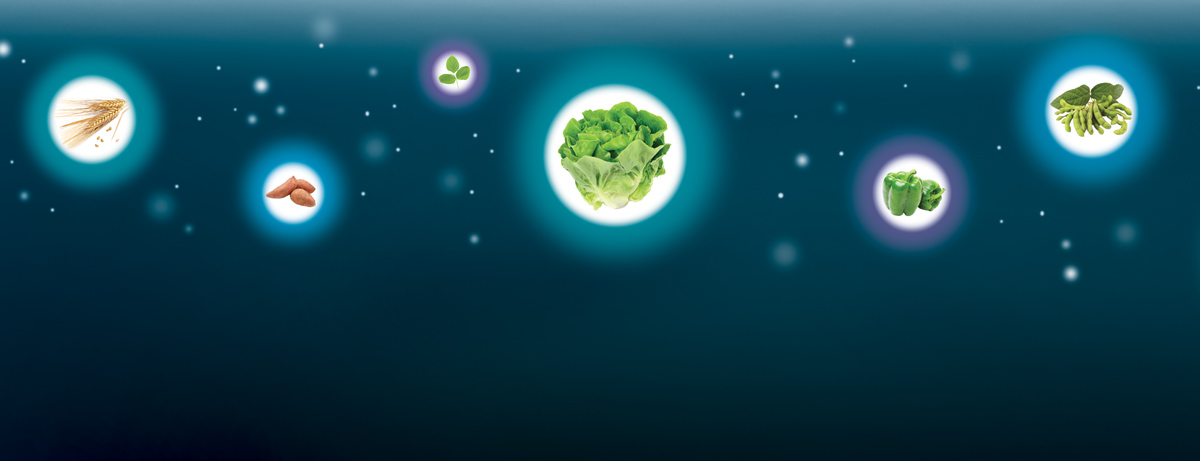
In a Garden Far, Far Away
UW researchers are unlocking the secrets to growing food in outer space.
In the 2015 blockbuster The Martian, Matt Damon’s character, stranded on the red planet, manages to survive for months by growing potatoes in the Martian soil. In his own waste.
Damon’s character is a botanist, a rare profession for Hollywood heroes. But if humanity is to achieve its most ambitious spacefaring goals — planetary bases, even interstellar travel — botanists might just see more starring roles, on-screen and off. Because plants, it turns out, are key to our ambitions.
Just as they do on Earth, plants in space can produce oxygen, recycle waste, and serve as food — a huge boon when extended trips make packing enough sustenance or relying on Earth for breathable air impossible.
For more than half a century, UW–Madison researchers have been at the forefront of developing a new agriculture for the final frontier. They’ve answered the earliest questions about how plants fare in space, built the equipment that grew the first crop in orbit, and brought us to the precipice of feasible space farms. Today, they are partnering with astronauts on the International Space Station (ISS) to decipher plants’ genetic responses to weightlessness, hoping to engineer plants that can thrive as human spaceflight advances.
“I think people are just totally engaged by the unknown above them,” says Simon Gilroy, a UW professor of botany. “We’re just built to explore.”
Veggies in Orbit
With his chest-length gray hair, penchant for Hawaiian shirts, and British accent, Gilroy is unmistakable. Animated and gleeful, his conversation quickly leaps from the tiny, unassuming mustard plants that dot his office to the future of space travel they foretell.
Nutrition is essential for astronauts, he explains. The space environment suppresses appetite, and preserved food is unpalatable. Appetizing, fresh food may be one way to keep astronauts at a healthy weight, and the antioxidants supplied by fresh fruit and vegetables might help them combat cancer risks spiked by cosmic radiation. And there’s the psychological component: living plants serve as a reminder of home.
Yet reaping these benefits requires overcoming challenges imposed by taking plants out of the gravity in which they’ve evolved. “One way to deal with these challenges is to … build an environment that basically takes the Earth’s environment into space,” Gilroy says. “The other way is to use our knowledge of the biology of the plants to engineer the plants to deal with the loss of gravity. And as a biologist, of course, I think that’s the much more elegant way.”
For 20 years, Gilroy has worked to understand both how plants sense gravity and how they handle the consequences of its absence. Without gravity, water can stick to roots, blocking oxygen much like a flooded field would. The stressed plants still grow, but weakly.
To understand that stress, and how to overcome it, Gilroy has launched his mustard plants, known as Arabidopsis, to the ISS during four experiments. His latest experiment arrived in December 2017. Astronaut Scott Tingle unwrapped 26 petri dishes containing 10 tiny seeds each and installed them into a plant growth chamber named Veggie. The seeds germinated, and the plants grew for a month. Midway through the experiment, Tingle took images under a microscope, capturing where the plants suffered from low-oxygen stress. The following month, Gilroy received the images, along with the frozen plants. He is now using advanced gene sequencing technology to compare the activity of genes in space-grown plants to those grown on Earth. Genetic engineering may help him and fellow researchers to prepare plants that can cope with the rigors of space travel.
Patrick Masson, a UW genetics professor, launched his own plants — the grass Brachypodium — to the ISS in April 2018. Much more closely related to major crops like wheat, rice, and corn than Gilroy’s Arabidopsis, the grass can give scientists clues about how the world’s most important crops might fare in space. “It’s a very steep learning curve,” Masson says of his first spacefaring experiment. “And that’s where being at an institution like [the UW] is really helpful, because there is that long tradition of people who have experiments in the space environment.”
Zero-Gravity Spuds
Bob Morrow PhD’87 is part of the UW’s long tradition of plant spaceflight researchers. He arrived on campus as a botany and horticulture graduate student in 1982 and joined the lab of Ted Tibbitts ’50, MS’52, PhD’53, a professor of horticulture researching how to use plants for life support and designing controlled growth environments for use on the space shuttle.
While Gilroy focuses on altering the biology of plants to thrive in space, Morrow tackles the engineering. “Once we identify a stress that plants face, then we can attack it with hardware systems and plant protocols,” says Morrow, who is now a principal scientist at the Madison campus of the Sierra Nevada Corporation, an aerospace contractor for NASA. He designed the Veggie system that Gilroy and Masson used for their experiments.
In August 2015, Veggie made history when U.S. astronauts Scott Kelly and Kjell Lindgren and Japanese astronaut Kimiya Yui toasted one another with Veggie-grown red romaine lettuce before delightedly munching on the leaves. It was the first time U.S. astronauts were given the go-ahead to eat space-grown produce. (Russian cosmonauts got the okay to eat green onions some four decades earlier.)
“That’s awesome,” Lindgren said at the time — between bites — offering a thumbs-up to his fellow astronauts.
“We understand enough now that we need to start demonstrating large-scale production of food crops in the space environment,” says Morrow. He has since worked with a team at Sierra Nevada and NASA to develop the Advanced Plant Habitat, the successor to Veggie and the space station’s current and most sophisticated growth chamber. And Sierra Nevada is now developing a much larger system with 80 square feet of growing space named Astro Garden for an eventual mission to Mars or a permanent lunar orbiter.
Veggie and its successors grew out of developments in plant spaceflight hardware that were pioneered in the Tibbitts lab in the 1980s and 1990s. Tibbitts was part of a NASA-sponsored interdisciplinary research center located in the College of Engineering, where he oversaw a team that pain- stakingly developed Astroculture, a compact plant-growth system for use on board the space shuttle.
“Ted was there at the beginning,” says Gilroy. “He’s one of the three or four people that you would say are the pioneers.”
Over several iterations, the team perfected systems for pumping nutrient solutions, providing sufficient light, controlling temperature and humidity, and managing carbon dioxide and other gases. By 1995, the researchers were ready to pursue one of their top goals — producing a crop in space.
“NASA had identified six primary life-support crops based on their nutrition and ability to be productive and that people were familiar with,” says Morrow. Those six — white and sweet potatoes, wheat, rice, soybeans, and beans — are still primary candidates for feeding crews today.
Tibbitts’s team, based in Wisconsin, the nation’s third-highest potato-producing state, chose potatoes. On Earth, miniature potatoes can form out of the buds of excised leaves in just a few days, so the researchers decided to test if these tiny tubers could grow in orbit. The UW team secured five leaves into Astroculture, and the space shuttle was launched in October 1995.
The results were obvious as soon as the growth chamber was opened nearly 16 days later: tiny tubers, just a couple of centimeters across, had formed on every leaf. Closer inspection showed only minor differences between the space-grown potatoes and their earthbound counterparts that served as controls. Those spuds were proof that a crop could be grown in zero gravity.
The Astroculture team continues this work today. While Morrow began working on Veggie at Sierra Nevada, postdoctoral researcher Ray Wheeler became the lead of advanced life-support systems at NASA’s Kennedy Space Center, where he partners with Gilroy and Masson on their experiments. And Morrow’s fellow graduate student Dan Barta MS’84, PhD’89 now manages life-support research at the Johnson Space Center.
When Tibbitts watched The Martian, he found the potato subplot suspiciously familiar.
“They never gave us any credit!” he says, laughing.
A New Age of Discovery
Tibbitts didn’t originally set out to grow potatoes in space. He was a lettuce man — on terra firma.
“I grew up on a [dairy] farm in Wisconsin,” says Tibbitts, now an emeritus professor. “The farm was rented out — I only milked the cows once or twice in my life. But I did work around the farm in the summertime for money — driving tractors, baling hay.”
Those experiences helped push the young Tibbitts toward the College of Agriculture when he arrived on the UW campus in 1946. He earned his undergraduate degree in agronomy, continuing on for advanced degrees in horticulture. After a stint in the army, he was hired by the university to research tobacco before being transferred to study the cause of tipburn, a condition that makes head lettuce unmarketable.
But funding from the lettuce industry was scarce. It was the Apollo era, and NASA was considering growing lettuce on the moon, so Tibbitts turned to the space agency in hopes of securing money for his research. While searching for NASA connections, Tibbitts met Sam Johnson, a space biologist at the North American Aviation Company, an aerospace contractor based in Los Angeles. The two began planning an experiment to test how zero gravity alters plant growth.
By 1967, a number of organisms had been sent on brief spaceflights, primarily to test the effects of cosmic radiation on life. Few experiments were exploring how organisms behave when gravity is ripped away. To get at these behavioral changes, Tibbitts and Johnson turned to pepper plants. As these are compact plants with broad leaves, several could fit into a tight space. The plants’ leaves normally stretch out perpendicular to gravity, and the team planned to use a camera to track the leaves’ position in zero gravity.
That September, the UW researchers strapped nine Yolo Wonder bell pepper plants into a 957-pound biological laboratory named Biosatellite II, which carried 13 experiments in all. The lab was launched on a Delta rocket from Cape Kennedy, Florida. For 45 hours, the plants orbited Earth. When a tropical storm approaching Hawaii threatened the planned recovery, the laboratory was instructed to reenter Earth’s atmosphere early. An Air Force plane captured the capsule as it parachuted over the Pacific Ocean and flew it to Hawaii.
There, Tibbitts waited. As with the tiny potatoes three decades later, the results were obvious as soon as the capsule was opened. The plants’ leaves, outstretched at launch, had drooped during orbit, offering one of the first insights into how plants respond to weightlessness.
The same year, the university opened the Biotron, a state-of-the-art, controlled-growth facility. Designed to provide climates ranging from below zero to 100-plus degrees Fahrenheit, the Biotron allowed scientists to strip away variability and tinker with different growing conditions.
Tibbitts quickly moved in, becoming the first plant scientist in the new facility. Working in the Biotron, he established himself as an expert in the precise control of plant-growth conditions, vital experience for his space-shuttle work. He was named director of the Biotron in 1987 while working on Astroculture.
That work also helped Tibbitts figure out how much space is needed for self-sufficient missions. He helped establish for NASA that 20 square meters of garden space are needed to keep a person alive. “This would provide them all the oxygen they need. It’ll provide all the water they need. And it’ll provide all of the energy needs, but not a balanced diet.”
That size is several times larger than even Sierra Nevada’s ambitious Astro Garden system in development, but Tibbitts and Gilroy are confident that in the near future — for space programs, this might mean decades — longer-term bases will be established, first in geostationary orbit, then on the moon or Mars. In many ways, Gilroy says, despite the enormous distance and other challenges, Mars provides an opportunity for the most Earth-like plant-growing systems. That’s in large part because Martian gardeners could rely on having about one-third of Earth’s gravity — possibly enough to keep plants growing normally.
Gilroy likens space travel today to the age of discovery on Earth, with explorers staring at horizons, unsure of what lies beyond, but eager to sail forward.
“We’re at the point of people jumping into boats,” he says, “and just going.”
Eric Hamilton is a science writer for University Communications.
Published in the Spring 2020 issue
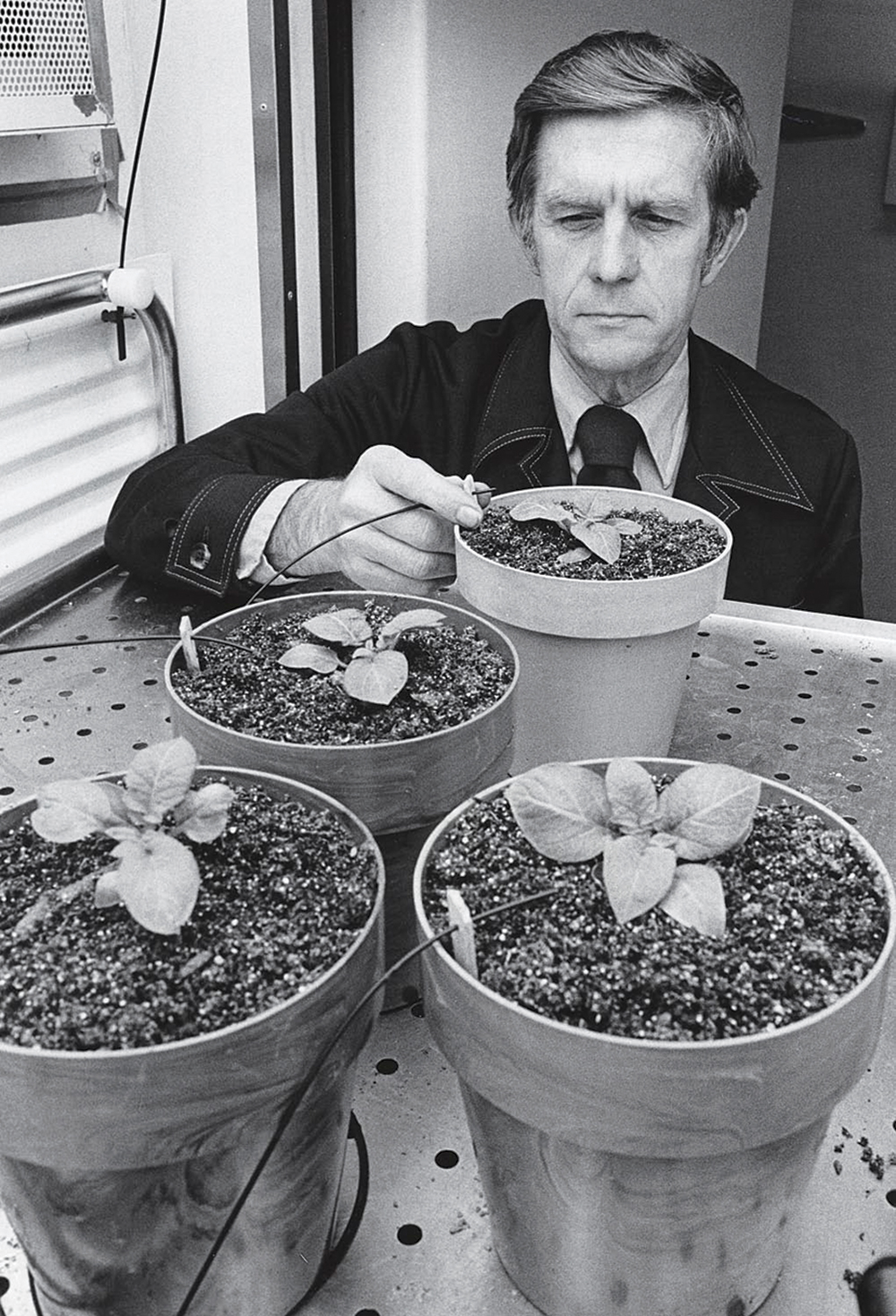
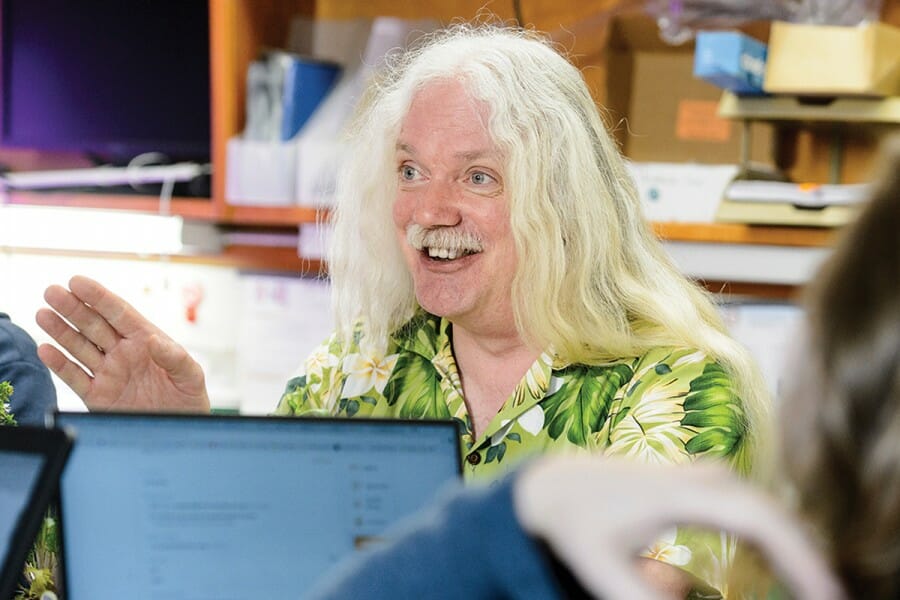
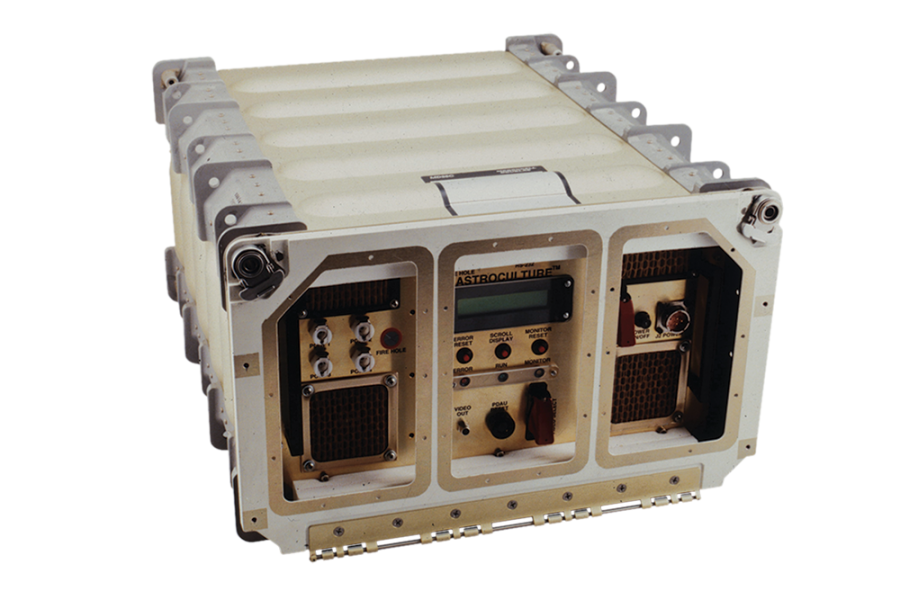
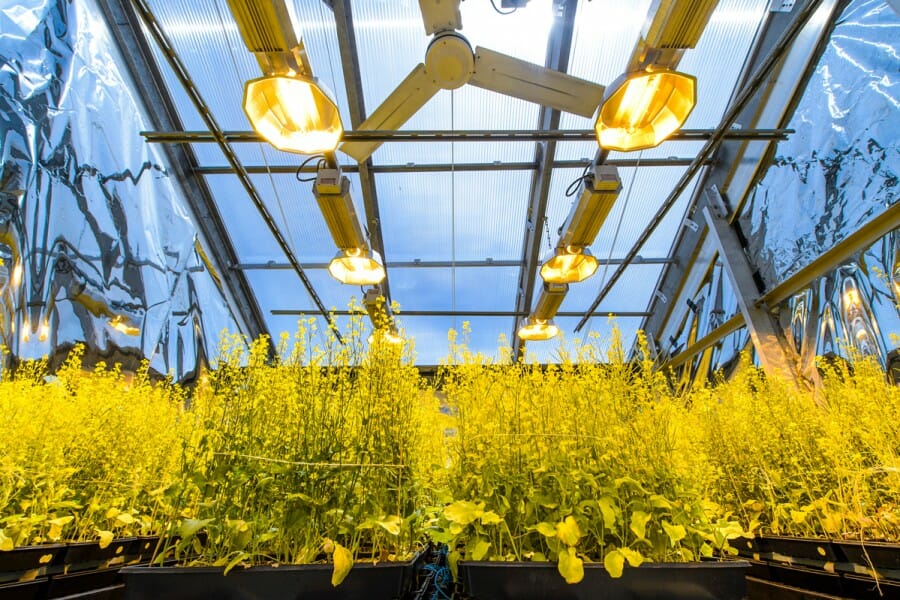

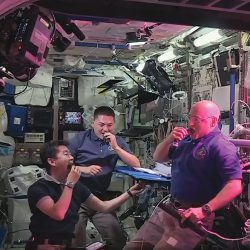
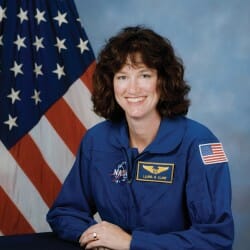

Comments
No comments posted yet.